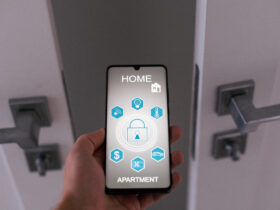With limited skills and experience, app development does bring some great job opportunities, but it can also be quite challenging for amateurs. When it comes to delivering on job expectations, any app user or developer knows that things aren’t always what they seem.
It is the same for app developers: theoretical understanding doesn’t always translate to real-world experience. Compared to what they can deliver, most freshers expect a lot more. As freshers in app development, it is normal for them to have a different set of expectations that are far more inflated than reality.
Mobile App Development from a Mobile Website
The mobile version of the website cannot be easily converted into an app format, and there are app makers to help you through the process, but they can only design basic apps. Rather, the app should be considered a tool that gives users all the information they need whenever they need it.
Therefore, in this blog, we will talk about the facts behind app development. We’re going to talk about the expectations vs. reality regarding the entire process of app development. Since we know that people have expectations about mobile app development that are out of line with reality.
Due to this, it is important to understand how mobile app development works and what you should really expect from it. Most professionals in this field are already aware of the different types of software engineers present in the market and how the work of each one differs from the other. For instance, a developer working on flutter will create an app differently than the one working on Django.
That said, let’s look at some of the most common expectations vs. realities associated with app development.
Mobile App Development: Expectation vs. Reality
Cost for Mobile App Development – Expectation
When you get apps developed, the common perception is that it’s expensive, especially in first-world countries the cost of technological development is high.
This is true in countries like the USA, the UK, and Europe. The thought behind this mindset is that about 90% of businesses believe the price trend exists in unison around the world.
Cost – Reality
As much as we’d like this to be true, it’s not. The development cost depends on the type of app you want to get developed, plus your needs and specifications for the software, etc.
All IT professionals are already aware of this; the cost of an app depends on its specifications. So, the more features and elements you integrate into your app, the higher the price will be. If you’re under a strict budget, the best approach would be to follow through with the basic details required of the app and move on to the development stage.

Amount of Time for Mobile App Development – Expectation
The common thinking among customers and even novice developers is that they can make an app quickly. The typical scenario is that app development is easy, so the product should be finished in a few days.
To outsiders and even freshers in the field, it may seem easy because they are unaware of a plethora of processes and tasks that are to be carried out for the application to come online. Simply submitting your requirements will not do; every detail must be accounted for, or the application would run a greater risk of being faulty.
Amount of Time – Reality
App development is a lengthy process. It depends on the complexity of the project – a complex project can consume more than a year of your time. Usually, it takes about a month to make an application fully functional.
You lose precision when you rush and end up with a failed app. Therefore, all developers know that giving proper time to the development process is essential.
To be brief about the process, it includes six stages;
- Ideation
- Designing
- Development
- Testing
- Launch, and
- Post-Launch
The process will not be completed in a short amount of time unless it is an MVP (minimum viable product). An MVP is a prototype consisting of its primary features with a catalog of its advanced setting, which would require several months to be properly functional.
Technology – Expectation
The belief is that the technology required to construct a complex interface is simple. That such an application would require the expertise of a single expert, who would set the configuration and get it up and running in no time.
You know what? It would be as easy as putting together Lego blocks, where they fit together immediately, and you’re done for the day.
Technology – Reality
Well, that was the understatement of the century. Now for the actual thing. The technology requires a programming language, choosing a framework that can give the necessary output per the client’s demand, and a server that can handle data (basically a storage capacity to accommodate all of the application’s data).
Lastly, a database can communicate data within milliseconds, making the app interactive and responsive. The expectation is that the app will work perfectly on all devices and platforms.
In reality, achieving flawless performance across various devices requires rigorous testing and optimization. Effective mobile app design is also critical to ensure the interface adapts well to different screen sizes and user interactions.
Plus, the application runs smoothly without freezing at every other instance. This is a particularly important aspect of a mobile application. More than 70% of user dissatisfaction is how often apps crash, are too slow, or unresponsive to touch. That doesn’t sound, does it? (That would be a no, by the way)
Submission – Expectation
The most common misconception among freshers in the field and customers is that the submission is the smoothest stage. Just one click of a button, and all you have to do is relax. The online stores will usher your app into the market.
Submission – Reality
If completing an application was like that, it would change many things. Keeping this in mind, the submission procedure is the most rigorous part of the overall development process. Your application will most likely be rejected on the first try. Even the smallest crash will get you rejected again and again. And, of course, reviewing the problem and fixing it takes time.
Final Words
In all, app development is an extensive and ongoing procedure; therefore, before developing your app, talk about these factors with your client beforehand. Be sure to remember the reality! Doing this will help you clarify what happens behind the scenes of mobile app development.














Leave a Reply